Cold Stratification
Allowing the armor to crumble so that the embryo might form
A tangle of shredded, plasticine lumber tarp thread, inter stitched with hay and frozen mud, gathered together by last spring’s starlings, sways lightly in a horizonless dawn, the faintly moving intrusion of arctic air nudging the sleeping world awake. In the gradual kindling of an ashen morning, the day’s dim light projects through snow-choked clouds, meeting the frozen earth, powdered in fine ice and strewn with squirrel-bit hedge fruit, crumbling bark, and chickadee shit. A moonless world of shadows had bled away, and an expanse of sleeping soil stretches underneath a gauze of pebbly, fine snow.
Perched on the edge of competing air masses, it is only a matter of a few hours before the frozen sky erupts in cascades of crystalline winter precipitation. For now, the ground is still freckled with protruding tall grass prairie thatch, bony stems of dormant goldenrod, the cracked ribs and crumbling spines of ironweed, bergamot, and sawtooth sunflower. Somewhere deeper down, beneath the muffled hush of accumulating snow, amid the frosty skin of the dirt, where the ice-lanced forms of unlucky earthworms lie in wait for robin’s beaks and jaws of shrews in the next thaw, the well-armored duff of this fence-row sleeps, pregnant with the germplasm of American persimmon, shagbark hickory, and chinquapin oak.
It is the season of stratification, when particularly hard-coated seeds adapted to temperate climates must undergo the eroding fluctuation between freeze and thaw, gradually softening the armor that keeps them from sprouting too early in the season and becoming tender and vulnerable seedlings before the onslaught of fierce, cold weeks ahead. Tree seeds and prairie forbs that might otherwise find the occasional warm and moist intermezzos of this long, frozen symphony an ideal time to sprout must instead hold off on germination, until the appropriate duration and amount of cold temperatures allow for emergence, in the growing daylight on the other end of winter’s spine
.
I too, may be stratifying a bit, buried in the embrace of this warm-enough-but-not-too-warm dwelling of earth and straw and wood, the hardened crust of last year’s seed coat chipping and flaking away as I heat this space with the slain limbs of oak and elm and hedge, next year’s plans for planting and pasturing and building still formless like embryonic jelly beneath the skin. Our rain tanks have frozen, making for arduous work. Moving sled-fulls of water jugs, grain and hay from barn to barn, across the smooth and icy trace-ways that stitch together the conglomeration of paddocks and gardens and outbuildings that crop out of the dim, frozen quilt, I learn to observe those places where the fields roll out in vast tracts of virgin snow, in comparison with the pockets and dips and draws where a thick armor of prairie thatch presses through to intercept and protect the fragile and sleeping earth.
We can measure and meditate upon our impact on these snow days, making note of where the livestock were grazed responsibly, and where we ran them harder than we should have. Inevitably, the blankets of snow and ice will give way to mud and muck, the bleeding of topsoil. In the places we have stewarded well, the quilt of snow is penetrated by bristly tussocks of grass, sedge, and desiccated flower-stalks, their sheltered thickets quaking with cardinals and white-crowned sparrows that feed on the caches of prairie seed-heads. In the overgrazed plots, the fine, cold grains of snow skip across frozen pock marks and hoofprints in the increasing wind, collecting in small drifts and dunes along the compacted depressions– an ungiving tundra.
I reach into my pocket– I’ve got a prairie in it, whether or not I’m happy to see you, in the form of fine, dusty chaff –the hand-collected and nervously crumbled bits and shards of seed-heads I’ve gleaned from the biological diversity at arm’s reach during my pasture walks– germplasm from rattlesnake master, wild bergamot, compass plant, and the like. In those areas where it might find purchase in between layers of fine flakes, I sprinkle it, maybe getting down on my knees to press it deeper into the thin, frozen clay. For some time, I thought it would be smart to always keep an envelope or two on me for when I come across a seed head in need of assisted dissemination, which could double as a place to write down chores and task lists, but the pens and pencils I keep in my pocket freeze or break in the brittle air, and the envelopes full of seeds stack up and fade into the piles of baling twine and pocket knives and screws and nails that collect on the windowsills. Best to just stuff them into my pockets. It sometimes seems like a very basic human instinct to pull at the seedy heads of passing plants as I ambulate, stripping and decapitating them, spreading them on the bare, worn earth.
I recently got an email from the National Weather Service, reminding me that I volunteered to report snow totals for our county. They told me the best way to provide an accurate report was to lay down a “snow board” (a flat, non-solar-absorbent item like a plank of wood or a sheet of cardboard, perhaps painted white, in a flat, sheltered area), measure the snow on the board with a ruler or yardstick or whatever, and call it in. To provide an even more accurate report, I could measure snow in ten nearby locations and average them out. I should call them in at 9 AM, 3 PM, and 8 PM, during the entire “snow event”. No artificial intelligence is being deployed here, for the National Weather Service is aggregating data from the obviously more finely tuned, superior human intellect of volunteer storm spotters. Yes, I have an official storm spotter number, and no, I can’t share it with you.
In order to make the phone call, I need a working phone with service, and enough electricity to carry the message. Before our local telecom provider switched over to fiber optic, our landline phone was energized by the phone company’s own copper lines. Even with no power of our own in times when our off-grid electrical system was shut down due to lack of sunlight, we could make a call, and with some light rewiring, steal enough power from the phone-line to run a small string of LED christmas lights. Now, powering our land line is our own responsibility, so my ability to communicate with the National Weather Service, or anyone really, is sometimes tenuous in these dark, wintry days, the connection as brittle as the frozen thatch.
My first phonecall into the NWS this morning was awkward, but I think I’m building a rapport with the guy on the other end of the line. I give him my storm spotter number, location, and snowfall total, and make sure to describe what kind of snow we’re getting. “It’s fine. The snow is. But everything is fine”, I speak into the crackling receiver, as a quickening shower of tiny ice crystals whirls around corners, infiltrating the sheltered brambles where dark-eyed juncos flit about blotting out the remaining pockets of brown and beige in a landscape drifting towards slumber. I have done a good job of providing shelter and some degree of insulation to all the living things in my charge, even the juncos, and we are all fine– the snuggled, snoring swine, the ruminating goats, the fluffed up chickens, and even myself, at repose, stratifying. The practice of stewardship and regeneration may take much in the way of physical labor and action, but here on the opposite end of photosynthetic zenith, the heart and mind must stratify, reformulate.
I’m burning more wood than usual, justifying it by using the wood-heat cookstove to pasteurize the slabs of smoked and cured bacon that have been hanging in the wind of our north porch. A tufted titmouse has been sneaking onto the fatty chunks of meat, pecking at them like tallow blocks. I roast the bellies in the oven and feed the fire-box throughout the day, in and out of the house with the flesh of trees and swine alike, provisioning our survival in the coming days of ice and wind. Sometimes, the rendered, smokey fat drips out of the pan and fills the air with an unctuous, greasy vapor. In and out, I hang up and take down pig parts and finalize their preservation, all while charging the thermal battery of our earth-plastered walls with dry wood-heat. I cannot calculate each small extraction I make from the earth as I do this, just hope that the seeds that lie dormant, outside in the hedgerow duff, in my pocket, and the formless jelly inside my heart and skull, come to germinate and restore what I have taken, to make the exchange whole.
Like a lot of animals, we cache seeds and protect resources. We disturb soil sometimes, but we’re also capable of building it. In my sled, I haul fresh flakes of hay to the pigs –I’m keeping two groups at this time– one group of eight ladies of diverse ages that currently have access to a dry, high-tunnel hoophouse as well as a modest pasture of thatchy prairie, and another duo of boars, named Tomato and Tomatillo, who are currently tilling and fertilizing a long abandoned garden with a cozy, hay-lined shelter. I bring them hay, for bedding, forage, and insulation– the preserved sunlight of summer’s photosynthetic zenith. Some of it is consumed and re-admitted to the earth as manure, or made into bone and skin, flesh and fat. Some is ground into the earth. In spring, when the swine have returned to pasture, I will pick this shuffled resource back up, pitchfork by pitchfork, and through composting and mulching, gradually feed it to the next crop of grass, peas, seedling trees, or potatoes
.
Like a lot of animals, I don’t think that human beings are inherently extractive of their own landscapes. Civilizations are, perhaps, at least extractive of other landscapes than their own (at first), but I believe that human societies, more or less organized into reasonably sized habitations, and for long enough to have some intermingling connection with the soil, tend to merely move and cycle resources around. Like all animals, they create disturbance, offer repair, and aid in dissemination. The introduction of capital, and the imperative to monetize that time which was once set aside for material survival, stands in contrast to our drive to coexist with local ecology. Suddenly, the provisioning of flesh –from trees, from animals, which we need to make it through these temperate winters– becomes a marketable commodity for someone else. I feel like we’ve given it a try, it doesn’t work, and I’m bored with capitalism, and tired of the murder-for-hire we purchase with our revenue in order to keep it in place, keep the resource flow consistently moving in one direction– up the hierarchy. So keep some prairie in your pocket, for whenever you find some place that needs regeneration– it isn’t the sort of process anyone can purchase.
By sundown, the layer of snow has thickened. I call my friend at the National Weather Service. Tell him it’s adding up out there, and drifting thick in places. My outhouse is completely plastered in ice, on the inside, the loose, sparse roll of toilet paper lost in a small drift. The snow is banking up and spilling inside of my boots as I step outside to pee. I spare my friend on the other end of this tenuous line of communication these more personal details. But you, dear reader, will not be so lucky.
In the past decade I have learned to build a home, pasture, care for, and kill livestock, select timbers in the woods to cut, steward at-risk prairie with fire, raise children, milk cows, and develop cooperative agricultural partnerships, but there has been no task quite as character-building as pooping in an outhouse during a blizzard. Perhaps some day in the future I will build an indoor set-up for convenience and a bit of luxury, but currently, I am completely house-broken, mostly out of pride. The need to evacuate always strikes me in the darkness of early morn’, when the air is coldest. According to the National Weather Service, measuring and observing weather can be achieved with a thermometer and maybe a yard-stick, but I personally find a deeper, more visceral understanding comes from performing certain crude body functions in the thick of the storm. A zero degree toilet seat costs next to nothing in comparison with a trendy ice bath, and I find the physical jolt and resulting dose of mental clarity it can administer via the butt-cheeks to be much more raw, authentic, and meaningful.
At daybreak, after having had my three and half minutes of zen in the shitter, I reemerge into a new landscape– one where blue jays and juncos and tufted titmouses (titmice?) flit on thorny and diamond-encrusted hedge limbs, and a bellowing cow can be heard a half-mile away in the bone white silence. The dogs have crystals in their whiskers– they leave steaming, snowless shadows out on the hay bales, having slept beneath the deepening blanket of snow. The armored earth tinkles and shimmers in hoarfrost, and the unfamiliar sun has broken through winter’s pall, or at least it appears that way behind the window, insulated next to the crackling, burning flesh of trees. The blue jays haven’t found my stash of stratifying acorns yet, and chip by chip, crack by crack, I feel the toughened seed-coat I’ve formed crumbling and corroding, hopefully giving way to new sprouts on the other side of this cold.


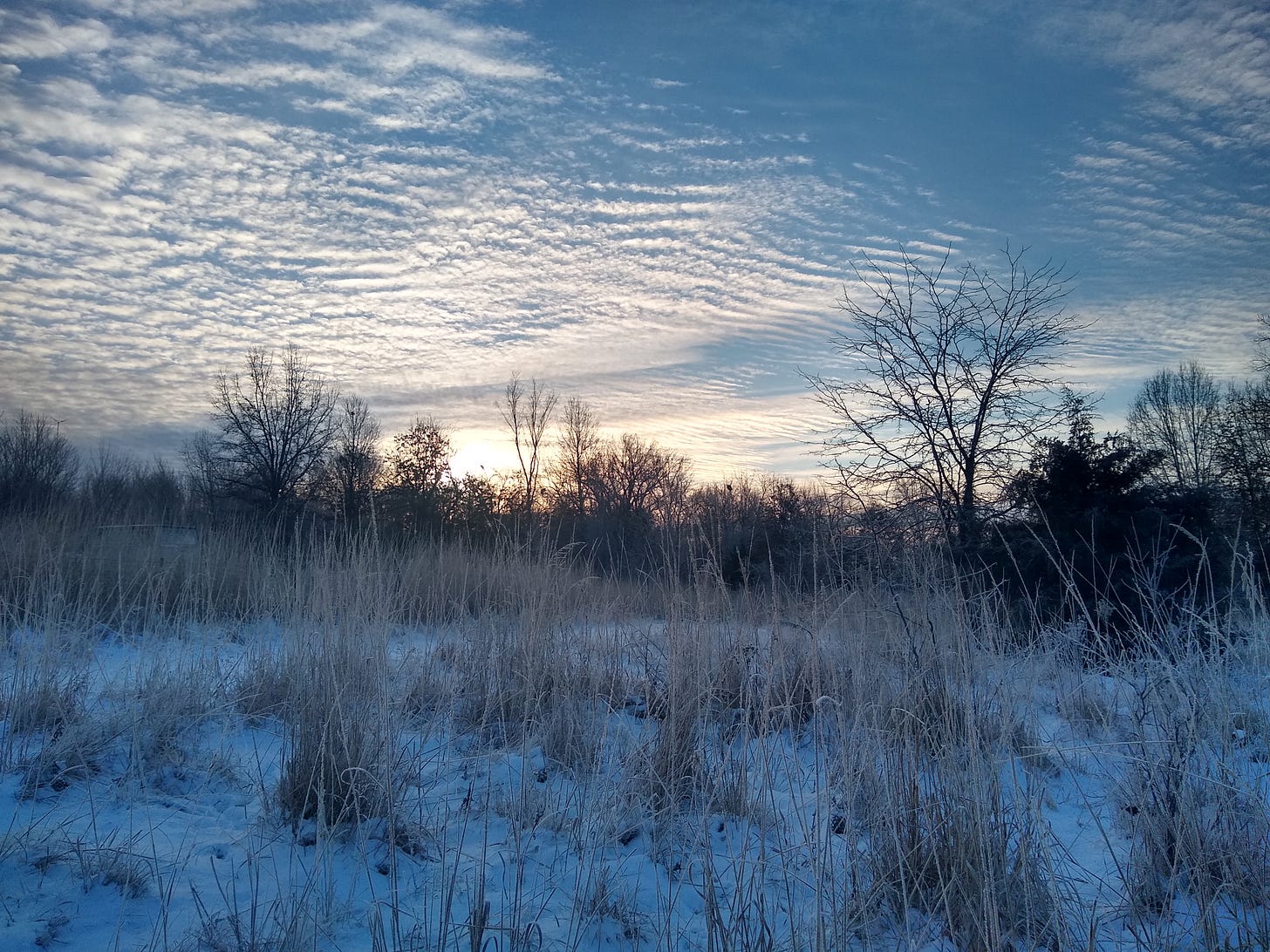
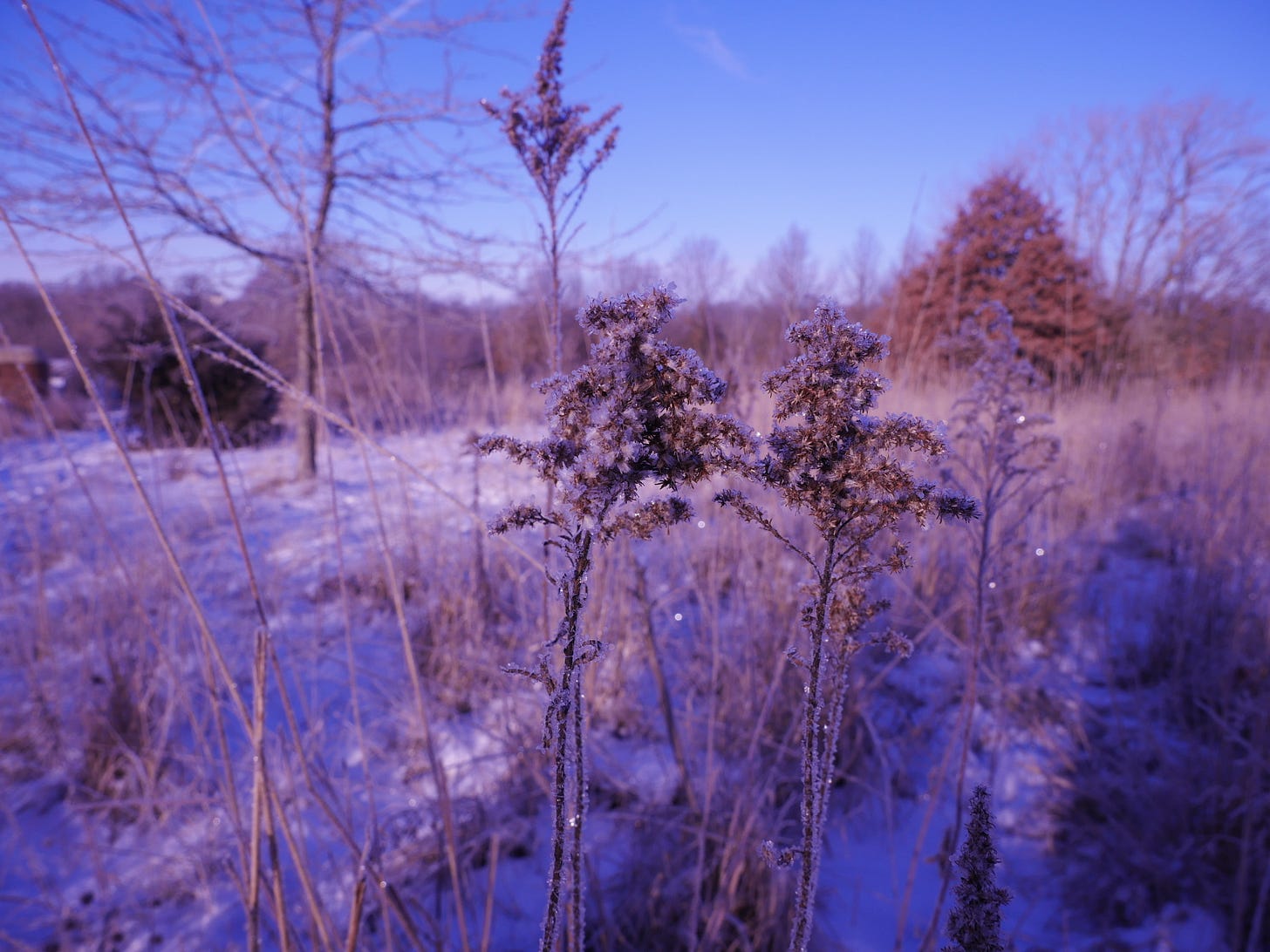


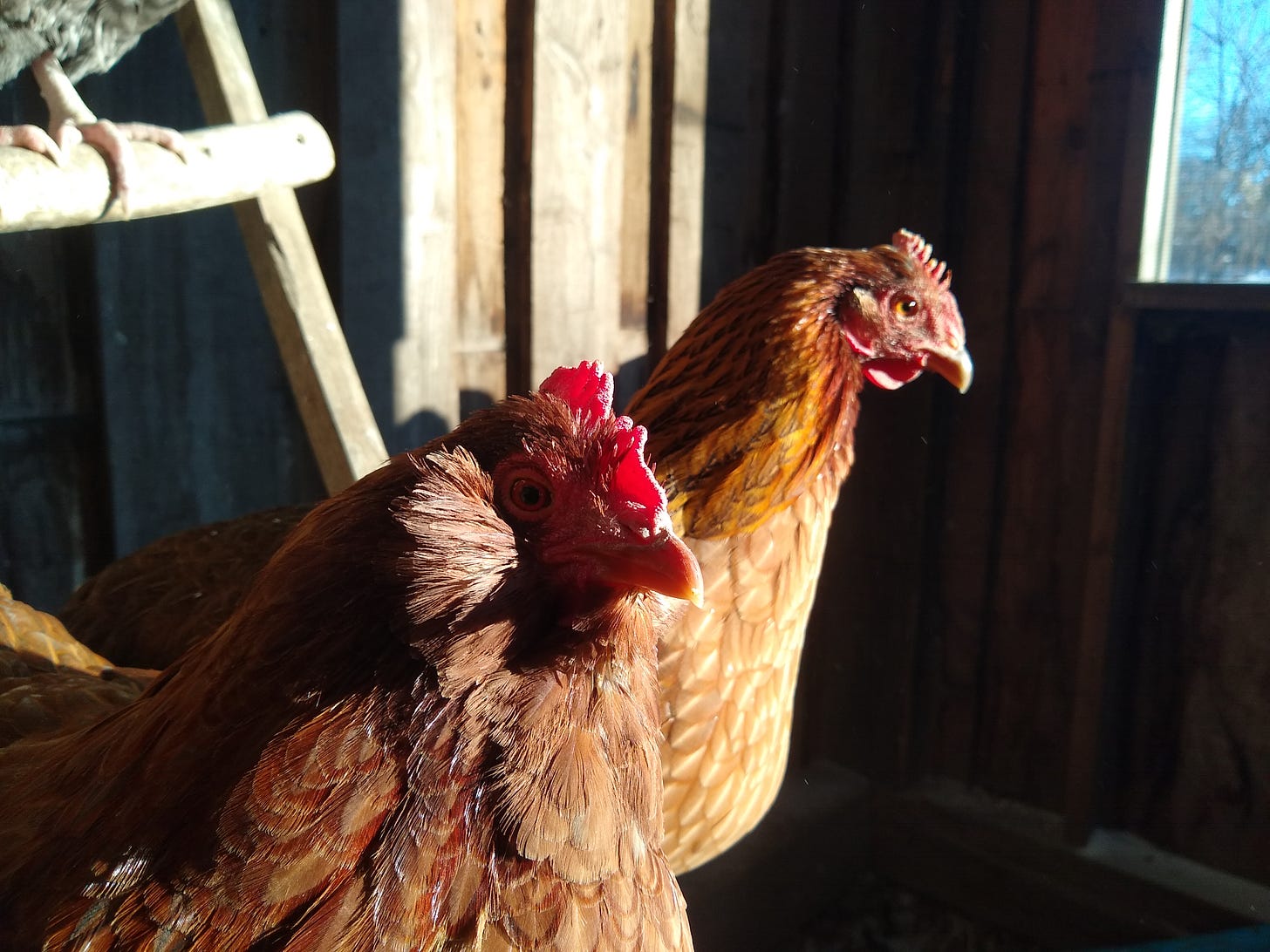
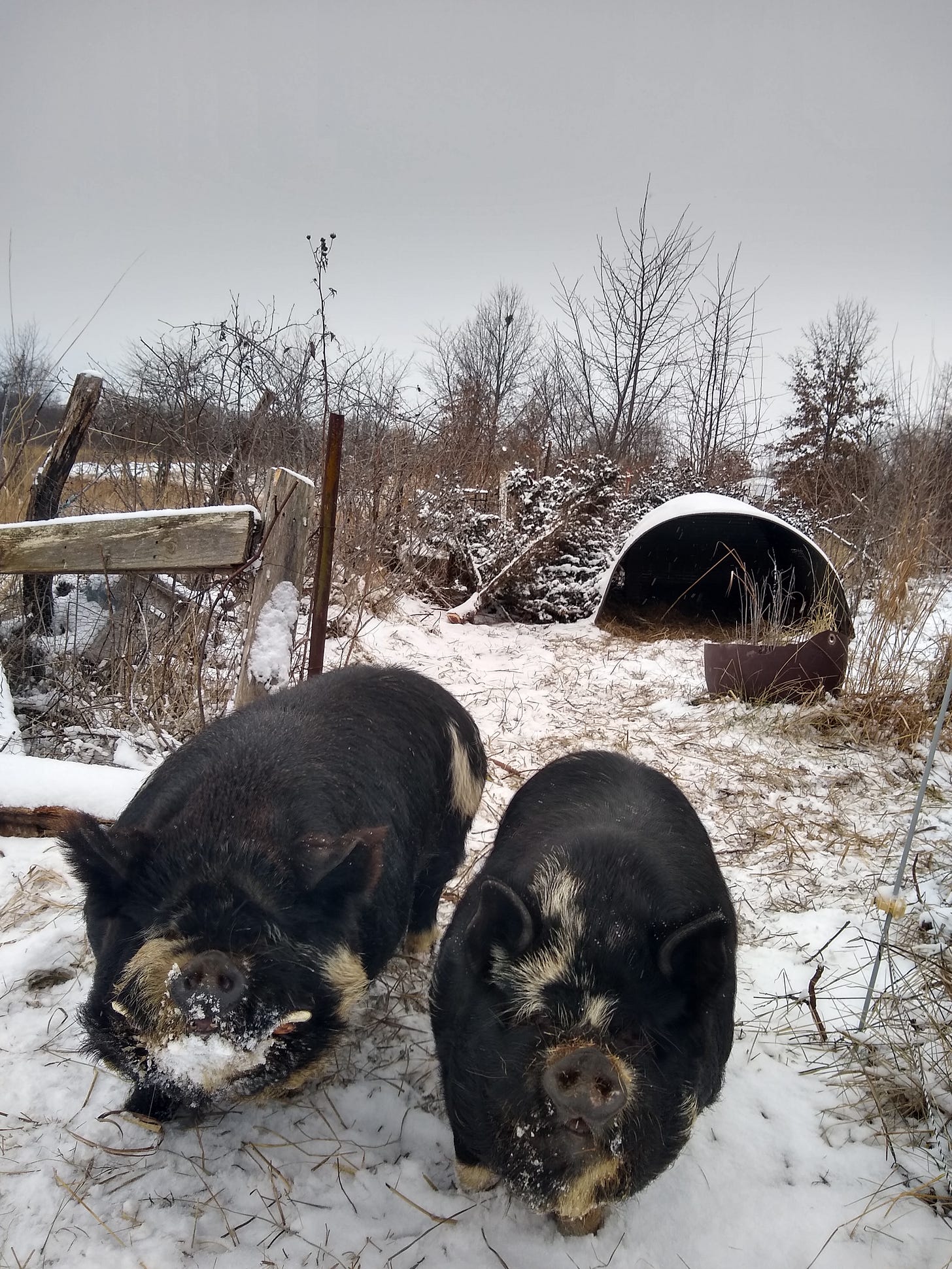
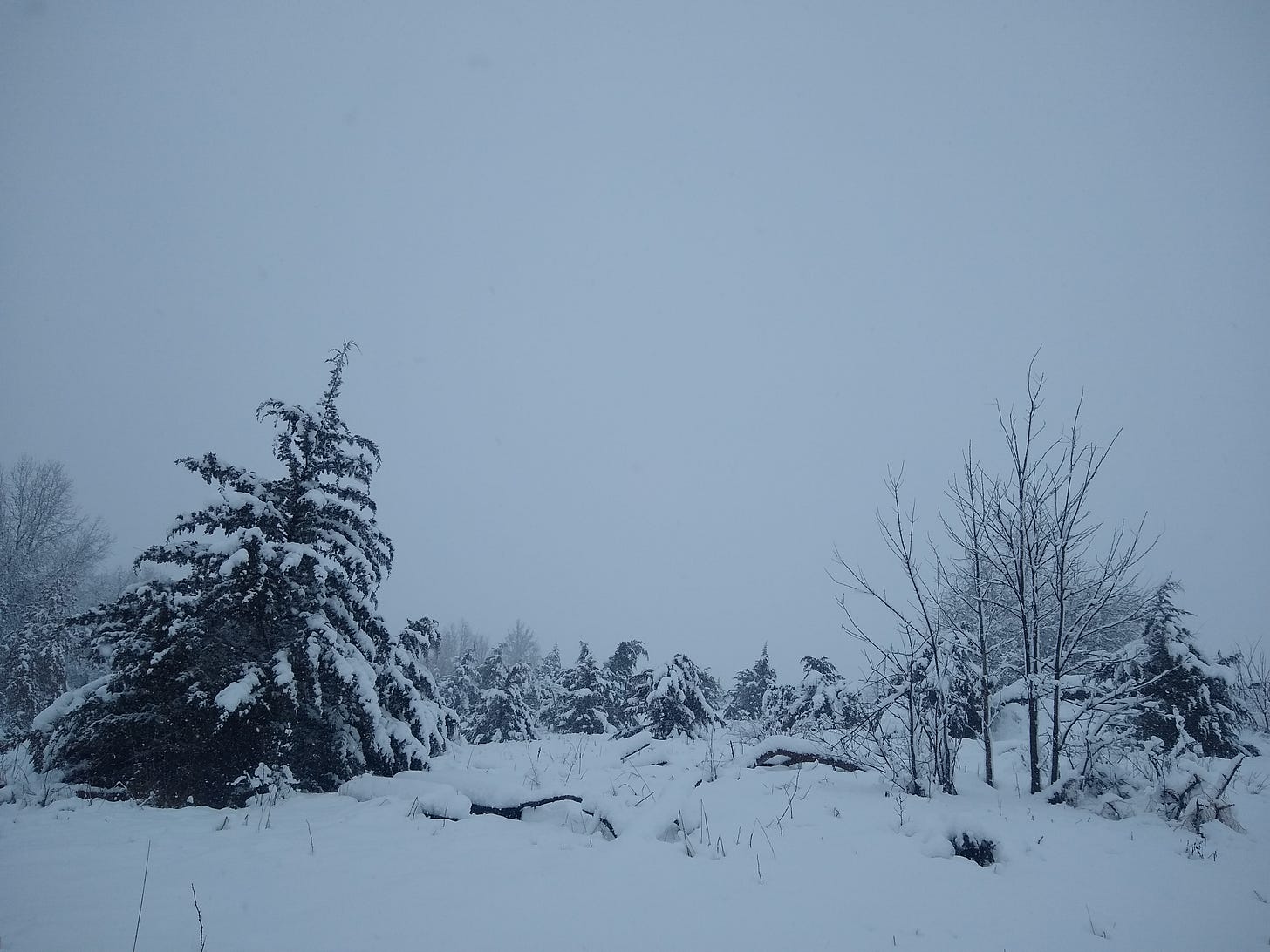
I love your thought of carrying a prairie in your pocket. I have never put it in these words to myself, even as I scatter wildflower seeds that need cold stratification in my own yard, but what an apt and empowering way to think about it.
Put blue foam insulation on the bench in your outhouse - It’s a game changer!!!